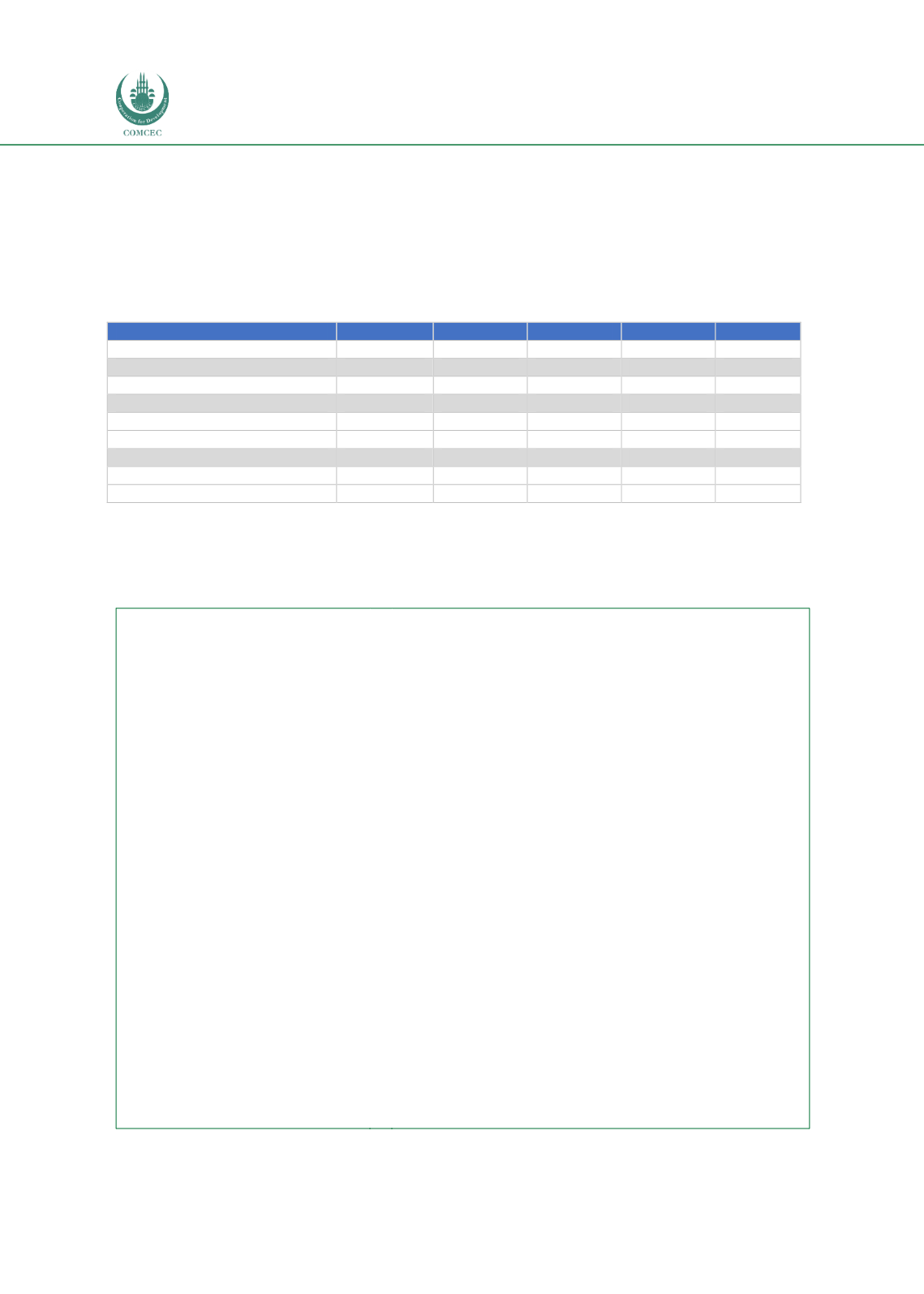

Islamic Fund Management
116
the availability of a common technology-led platform for individuals to access and use a full
suite of payment, savings, insurance and credit services (IMF, 2017).
As a result, the number of individuals that are holders of mutual funds has increased
significantly since 2015, as depicted i
n Table 4.15 .Even so, more concerted efforts are needed
to create greater awareness among retail investors, particularly unbanked.
Table 4.15: Number of Investors' Accounts (Open- and Close-Ended Mutual Funds)
Category
2013
2014
2015
2016
2017
Individuals
203,560
209,297
228,906
246,043
270,386
Banking & financial institutions
839
787
682
724
819
Provident & pension funds
2,198
2,369
2,789
3,098
3,805
Public limited companies
612
734
600
601
305
Associated companies
451
435
401
420
320
Others
3,127
3,026
3,051
2,792
28,460
Fund of funds*
141
Total including fund of funds
210,787
216,648
236,429
253,678
304,236
Total excluding fund of funds
210,787
216,648
236,429
253,678
304,095
Source: MUFAP (2017)
* Effective 27 April, 2017, AMCs are required to exclude the amount invested by fund of funds schemes in the
underlying funds managed by the same AMC while publishing the amount of assets under its management in
advertisements.
Box 4.5: Pakistan’s NFIS (2015-2020)
Overview:
In May 2015, the Pakistan government
launched and adopted the NFIS, the key
objective of which is to set a national
vision for the achievement of universal
financial inclusion in the country. The
NFIS underlines the government’s vision,
framework, action plans and target
outcomes for financial inclusion. It aims to
increase formal financial access to 50% of
the adult population by 2020.
Key Enablers:
1.
Public and private sector commitment
2.
An enabling legal and regulatory
environment
3.
An adequate supervisory and judicial
capacity
4.
Financial, payment and ICT
infrastructure
Key Drivers:
1.
Promoting digital transactions and
achieving scale through bulk payments
2.
Expanding and diversifying access
points
3.
Improving the capacity of financial
service providers
4.
Enhancing financial capability
Key Milestones of the NFIS:
1.
Enhancement of biometric infrastructure to aid real-time account
opening (2015).
2.
Payment systems interoperability of the MFS platform with core
banking accounts through financial switch (1-Link) enabling ATM,
POS and interbank funds transfers through m-wallets (2015).
3.
The Government of Pakistan accepts membership of the UN’s
Better than Cash Alliance
(2015).
4.
Establishment of three centres of excellence in Islamic finance
education to ensure an adequate supply of trained human capital
for the industry (2015).
5.
Incorporating the Pakistan Mortgage Refinance Company to
address the long-term funding constraints hindering the growth of
the primary mortgage market (2015).
6.
Launch of the CGSMF with funding support from the Government
of Pakistan, to share the losses with banks against their collateral-
free financing to small and marginalised farmers (2016).
7.
The NFIS Council approved key strategic actions such as:
The development of a National Payment Gateway.
Automation of government collections and disbursements.
Introduction of a warehouse receipt financing system.
Integration of the National Savings Scheme with the national
payment system.
Initiation of new schemes for registered prize bonds.
8.
Development of mobile accounts - DTA Scheme – AMA to support
the rapid expansion of digital transactions, particularly in rural
areas. The unified DTA scheme is expected to help design a
common technology-led platform for individuals to access and use
a full range of payment, savings, insurance and credit services
(2017).
9.
Launch of the Home Remittance Account (HRA), a branchless
banking account to promote a swift and cost-effective mode of
receiving money from abroad (2017).
Sources: SBP (2015), IMF (2017), Pakistan Economic Survey 2017-18 (2018)
















